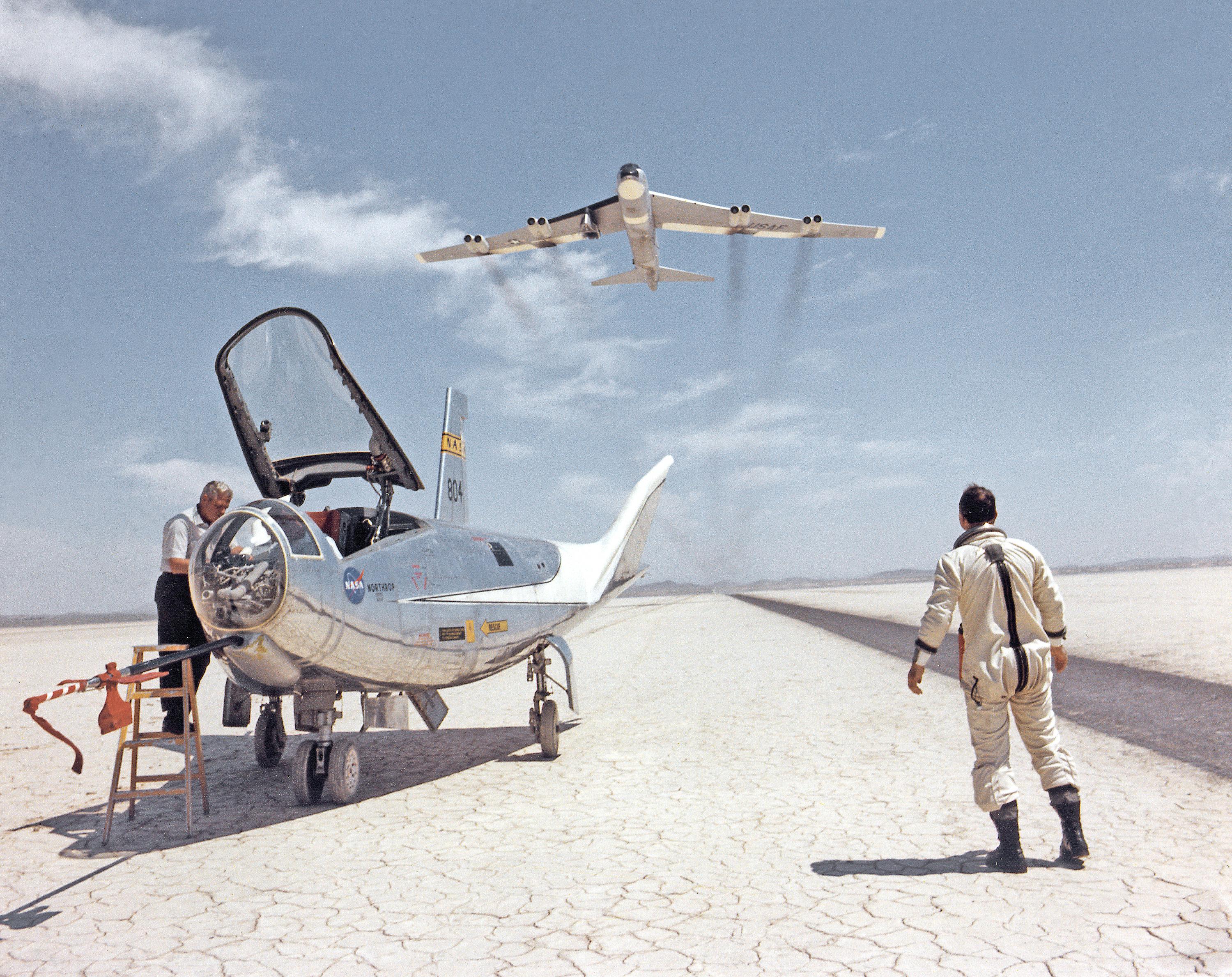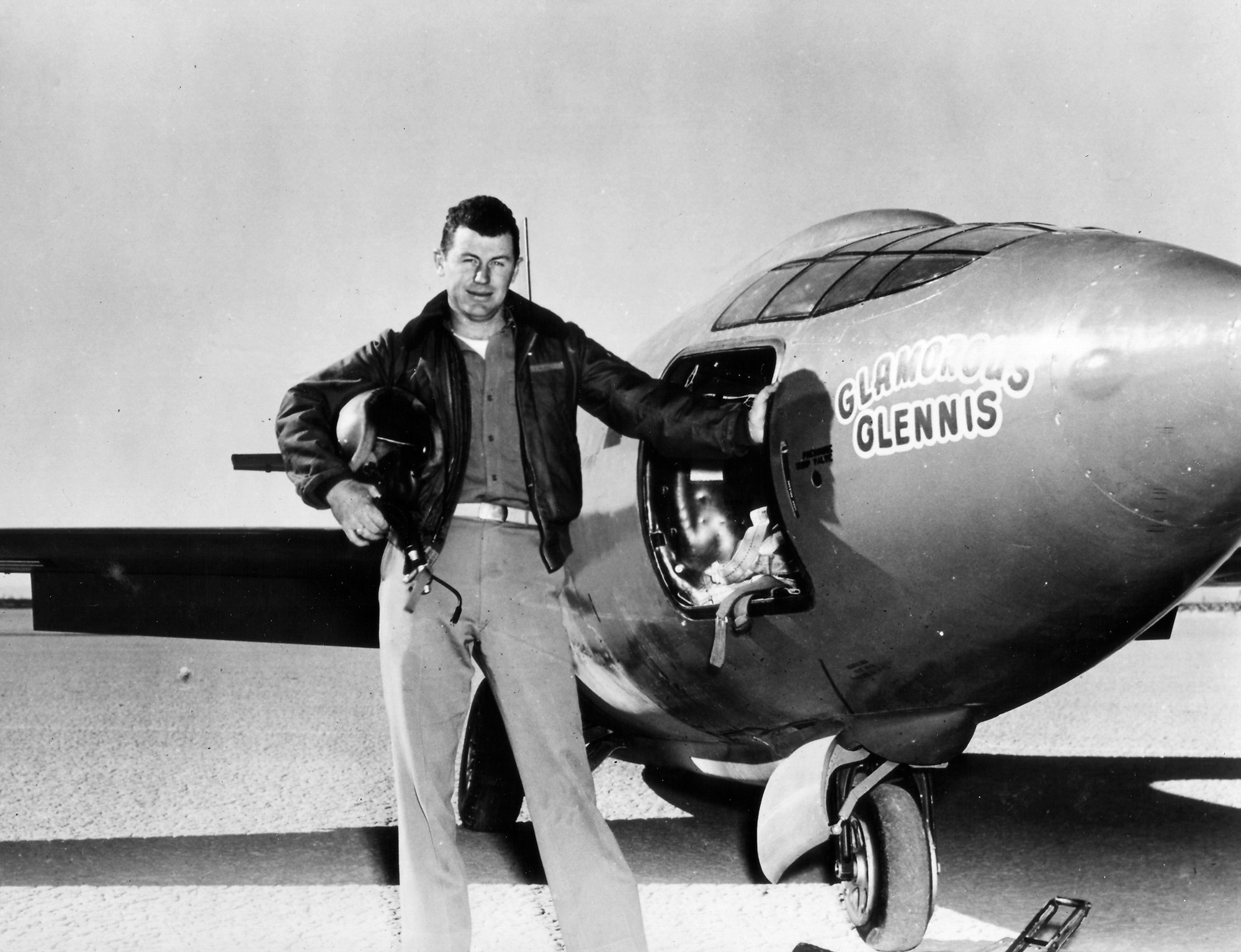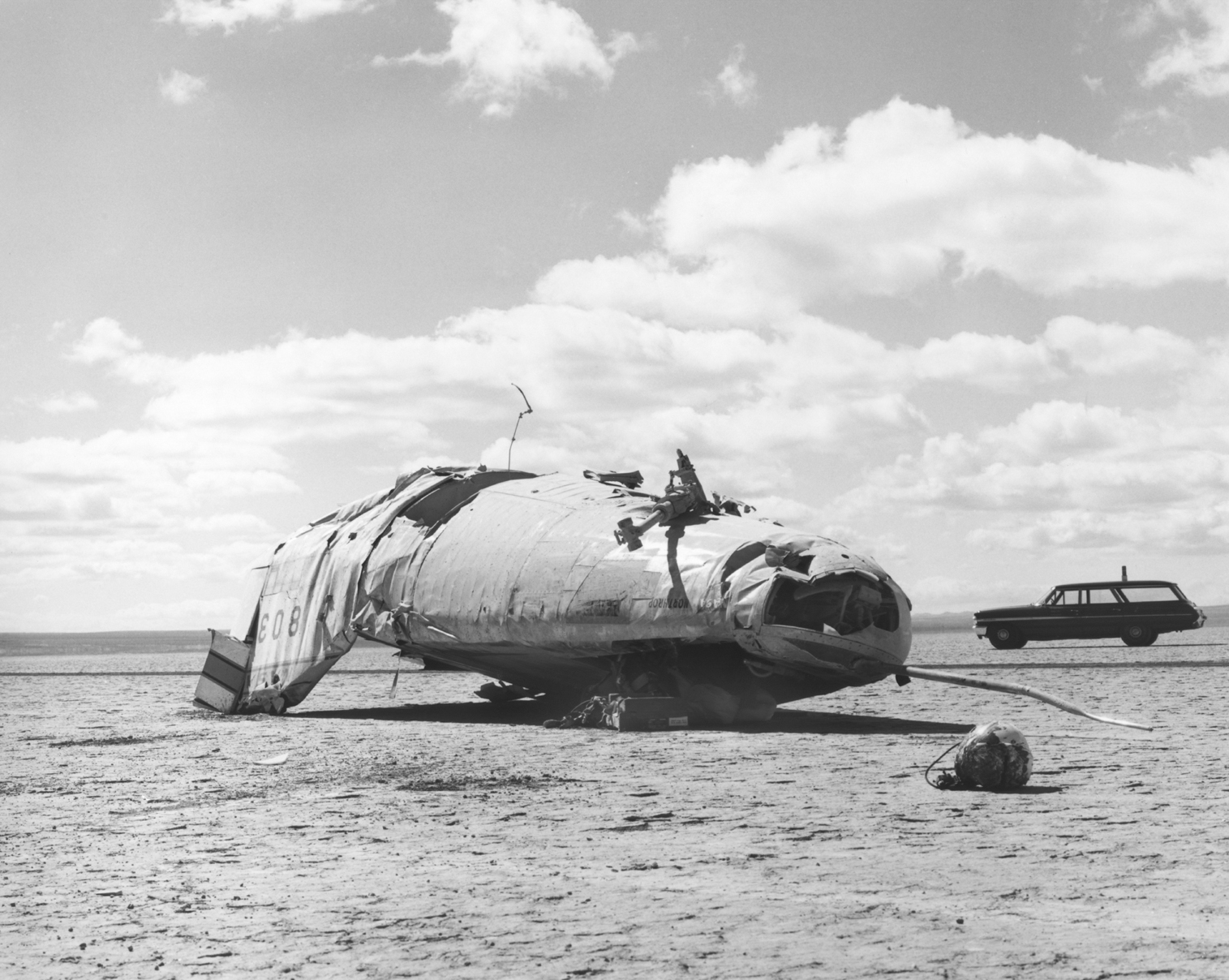NASA's Armstrong Center: Flying what others only imagine
Reference article: Facts about NASA's Armstrong Flight Research Center.

Named after astronaut Neil Armstrong, NASA's Armstrong Flight Research Center (AFRC) main facility sits under the clear skies of the Mojave Desert, at the edge of Rogers Dry Lake, about 100 miles (161 kilometers) northeast of Los Angeles. A second facility, Building 703, is adjacent to the Palmdale Regional Airport, about 45 miles (72 km) closer to Los Angeles. More than 1,150 government and contractor personnel work at the two campuses.
The center's name has changed over the decades. Its original name was the High Speed Flight Research Station, operated by NASA’s predecessor agency, the National Advisory Committee for Aeronautics (NACA). When NACA became NASA in 1958, the Center was known as the NASA Flight Research Center. In 1976, it was named the Dryden Flight Research Center in memory of Hugh L. Dryden, a respected NACA aeronautical engineer and NASA deputy administrator. The Armstrong name was bestowed in 2014, honoring Neil Armstrong's contributions to aeronautics, including his years as a research pilot at the center through the 1950s and early 1960s.
Among the 10 NASA field centers, Armstrong is "the agency's lead center for atmospheric flight research, operations and testing," according to the center's website. Armstrong has an average of 345 days of good flying weather per year and the sparsely populated location makes it ideal for experimental flying.
Rogers Dry Lake is 44 square miles (114 square km) of flat, dried mud that's perfect for emergency landings, according to NASA. Seven unpaved runways are marked on the lakebed, the longest extending 7.5 miles (12 km). There is also a concrete runway that's 2.8 miles (4.6 km) long. Nearby Rosamond Dry Lake offers another 22 square miles (57 square km) of landing surface.
The era of the X-planes
According to "Flights of Discovery" (NASA, 1996), a 50th anniversary history of the center written by Lane E. Wallace, the Armstrong center, as it is now called, was founded in 1946 when a small team of NACA engineers and support staff arrived at Muroc Army Airfield, the original aviation facility on Rogers Dry Lake. Their mission was to fly the X-1 rocket plane faster than the speed of sound, or Mach 1 as it's known to aeronautical engineers (the Mach number is named after the late 19th century physicist Ernst Mach).
Related: Photos: Amazing X-planes from the X-1 to the XV-15
The X-1 achieved this goal on Oct. 14, 1947. Piloted by Air Force Capt. Chuck Yeager, and launched at an altitude of 43,000 feet (13,100 m) from the bomb bay of a four-engine propeller-driven B-29, the rocket plane achieved a speed of Mach 1.06, about 700 mph (1,127 km/h). Yeager's flight was recounted in Tom Wolfe's book "The Right Stuff" (Farrar, Straus and Giroux, 1979) and the 1983 movie adaptation of it.
More experimental aircraft followed over the next two decades: Planes with swept-back wings, swept-forward wings, triangular or delta wings and wings whose shape could be adjusted in flight; planes that could fly with their noses pointed high in the air, a position that makes rapid turns possible; and planes that could reach or exceed Mach 3.

X-15: To the edge of space
In the X-15 program, NASA and the U. S. Air Force explored high altitudes and speeds beyond Mach 5. The X-15 rocket plane, with its distinctive black finish (except for two flights with an experimental white heat-protective coating), short wings and thick tail surfaces, was dropped from a B-52 bomber over Utah or Nevada and flew back to California boosted by its own rocket engine. The X-15 engine would exhaust its fuel 80 to 150 seconds after leaving the B-52, then glide to a 200-mph (322 km/h) landing on Rogers Dry Lake — an appropriate place because the X-15's nose wheel and two tail skids weren't steerable.
Three X-15s were built, logging 199 flights from 1959 to 1968, according to NASA. Some missions climbed steeply for maximum altitude; others were flown more or less level, aiming for speed. The highest altitude reached by an X-15 was 354,200 feet, or 67 miles (108 km), in 1963; the speed record was 4,520 mph (7,274 km/h), achieved in 1967.
Related: X-15 rocket plane and crew had the right stuff
Future Apollo 11 commander Neil Armstrong was one of the 12 pilots who flew the X-15, making seven flights from 1960 to 1962. The pilot with the most X-15 missions was Air Force pilot Robert A. Rushworth, with 34 missions.
The success of the X-15 was pivotal for the field of aeronautics for many reasons: For example, it showed that small jets could be used to control the orientation of a craft above Earth's atmosphere, it demonstrated a structure that could withstand the heat of a hypersonic reentry into the atmosphere, and it served as the first test of how well pilots could fly in a full-pressure suit.
Testing flying bathtubs
Taking a different approach to high-speed flight were the lifting bodies — small, wingless craft shaped like a cone sliced lengthwise. The idea was to make a craft that could survive reentry from orbit into Earth's atmosphere, and still have some ability to steer through the air to a landing site by rolling from side to side, using the body's small amount of aerodynamic lift to influence the flight path.
The first lifting body, the M2-F1 "flying bathtub," was a prototype made of plywood. Lane Wallace's history describes how it was towed into the air like a kite by a modified Pontiac convertible driving over the lakebed at more than 100 mph (161 km/h). Later versions of the lifting body had more mature designs, with metal airframes and rocket engines, and, like the X-15, were launched in the air from a B-52.
Related: Space history photo: Pilot Milt Thompson and the M2-F2 lifting body
One lifting body flight appeared on millions of TV screens every week because its spectacular crash was caught on camera. At the end of a mission in 1967, the M2-F2 slammed into the ground at 250 mph (402 km/h) without its landing gear locked in place. It violently tumbled across the desert in a cloud of smoke and dust. Pilot Bruce Peterson survived, but lost an eye. Film of the crash was used in the opening credits of each episode of the 1970s TV series "The Six Million Dollar Man," a fictional show about an astronaut who crashed his spaceship.
The lifting body program continued until 1970, after having tested four designs. Over 100 successful lifting body flights helped convince engineers that the space shuttle could glide to an unpowered landing.

The space shuttle era and beyond
Early in the shuttle program, Dryden hosted a series of Shuttle Approach and Landing Tests, in which the space shuttle Enterprise rode a modified Boeing 747 into the air, then separated to glide to a landing on the lakebed. Once regular flights began, Dryden served as a landing site for 54 space shuttle missions, including the very first, STS-1, in 1981.
When you fly on a plane today, you are benefiting from research performed at the Armstrong Flight Research Center. For example, the first digital flight control computers and software systems for aircraft were developed here, as was the standard landing approach pattern for the Boeing 707 airliner. Other test flights here showed how swirling, tornado-like masses of air called wake vortices are produced by large airplanes and can flip smaller planes that follow too close behind.
Related: NASA's space shuttle program in pictures: A tribute
Armstrong engineers test airplanes not only in the air but also on the ground. At the Flight Loads Laboratory, large components such as aircraft wings are stressed with flexing, heating and cooling while their responses are measured. The Research Aircraft Integration Facility can "fool" an entire airplane into thinking it is flying, except for running the engine, testing all the electronic and control systems together in a simulation flight.
Building 703 in Palmdale previously belonged to Rockwell International, a large American manufacturing company, according to a NASA fact sheet. Now, the building serves as a hangar with a floor almost as large as four U.S. football fields, and houses research aircraft based at Armstrong. That fleet includes a modified F-15 fighter, a modified Gulfstream business jet, a modified DC-8 airliner, two high-altitude subsonic jets and two programmable drones. Each plane is outfitted to carry models to be tested at high speed or high altitude, or instruments to observe Earth or its atmosphere.
The biggest of the research aircraft routinely flying from Armstrong is SOFIA, the Stratospheric Observatory for Infrared Astronomy, a Boeing 747 modified to carry a large astronomical telescope.
As with other NASA centers, Armstrong has many projects going on at any one time, in different stages of development.
The Unmanned Aircraft Systems in the National Airspace System, or UAS in the NAS program, explores how human-piloted and unmanned aircraft will share airspace in the future. In 2018, the research plane Ikhana (from a Choctaw word meaning "conscious" or "aware") made a six-hour flight around California under the direction of engineers in a control room at Armstrong, making it the first remotely piloted aircraft allowed by the Federal Aviation Administration to fly in national airspace without a chase plane, according to a NASA press release.
An all-electric airplane, the X-57 Maxwell, is being developed at Armstong by making a series of modifications to a commercially purchased Italian propeller-driven private plane. According to a NASA web page on the project, when it's done, the X-57 will have an entirely new, specially shaped wing with 14 electric propellers.
Armstrong is one of four NASA centers preparing for flights by the sharp-nosed X-59 Quiet Supersonic Technology (QueSST) aircraft. The X-59 is intended to fly faster than sound without producing an annoyingly loud sonic boom on the ground. Project managers expect the first flight in 2021.
Additional resources:
- Watch a wing-flexing test in this NASA video.
- Take virtual tours of the Armstrong center on the Google Expeditions app.
- Check out the logos and patches for Armstrong missions from the earliest days to the present.
Join our Space Forums to keep talking space on the latest missions, night sky and more! And if you have a news tip, correction or comment, let us know at: community@space.com.
Get the Space.com Newsletter
Breaking space news, the latest updates on rocket launches, skywatching events and more!
Steve is a former contributor to Space.com in the coverage areas of stars, exoplanets, and constellations. He's an author, podcaster, and retired Planetarium Director at Rochester Museum & Science Center where he was employed for 28 years and responsible for content and scheduling of the venue's Planetarium astronomy shows. Other duties included adapting still and moving images, music and sound, narrating shows, and leading selection and scheduling of all film and laser shows. His book, Sky to Space: Astronomy Beyond the Basics with Comparisons, Ratios and Proportions was published in 2017.










